by Eric Meier
The most common test for testing wood hardness is known as the Janka hardness test. The actual number listed in the wood profile is the amount of pounds-force (lbf) or newtons (N) required to imbed a .444″ (11.28 mm) diameter steel ball into the wood to half the ball’s diameter.

In practical terms, a helpful question to ask would be: hard is hard enough? A lot of times, especially on floors, the finish will get scratched, when the wood underneath is perfectly fine. (This obviously excludes dents.) In all practicality, a great number of hardwoods are “hard enough” for nearly all residential applications. But, if you’ve simply got to have the hardest lumber around, then this list is for you!
|
|
||
 |
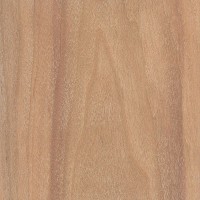 |
Cebil(Anadenanthera colubrina) 3,630 lbf (16,150 N)Also known as Curupay or by the exaggerated name Patagonian Rosewood, Cebil is not a true rosewood. It has a highly variable streaked appearance not too unlike Goncalo Alves. |
|
|
||
 |
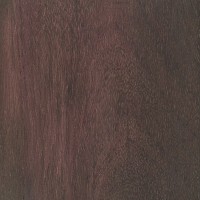 |
Katalox / Wamara(Swartzia spp.) 3,655 lbf (16,260 N)Some pieces can be just about a dark as true ebony, while others are a more reddish brown with black streaks. So much depth in the Swartzia genus, there’s something for everyone! |
|
|
||
 |
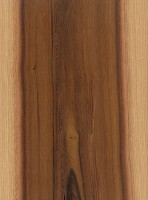 |
Black Ironwood(Krugiodendron ferreum) 3,660 lbf (16,280 N)Pieces are very seldom seen for sale, as this tree is too small to produce commercially viable lumber. Like the unrelated Desert Ironwood, Black Ironwood is an excellent choice for small turning projects. |
|
|
||
 |
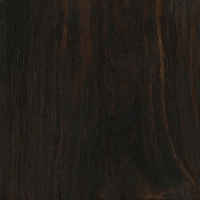 |
African Blackwood(Dalbergia melanoxylon) 3,670 lbf (16,320 N)In some parts of the world, this wood has achieved an almost legendary status. Historical evidence points to this wood (rather than Diospyros spp.) being the original “ebony.” |
|
|
||
 |
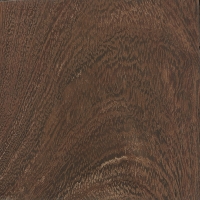 |
Camelthorn(Vachellia erioloba) 3,680 lbf (16,370 N)Formerly classified as a member of the Acacia genus, this south African hardwood is a tough customer. The wood is stubbornly hard, and the tree is protected by giant sharp thorns. |
|
|
||
 |
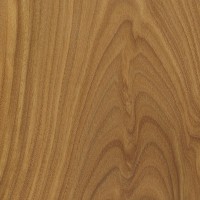 |
Verawood(Bulnesia arborea) 3,710 lbf (16,520 N)Sometimes called Argentine Lignum Vitae, this wood is a gem: inexpensive, great olive-green color, beautiful feathery grain pattern, and it takes a great natural polish on the lathe. |
|
|
||
 |
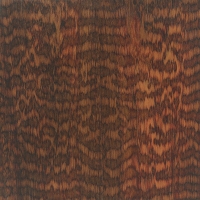 |
Snakewood(Brosimum guianensis) 3,800 lbf (16,900 N)It’s easy to see what makes Snakewood so unique–its patterns and markings resemble the skin of a snake. Limited supply and high demand make this one of the most expensive woods on earth! |
|
|
||
 |
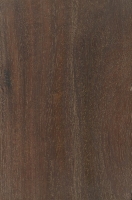 |
Gidgee(Acacia cambagei) 4,270 lbf (18,990 N)This Australian endemic is both very heavy and very strong. Some pieces are dark enough to be used as an ebony substitute: one that’s even harder than the original article. |
|
|
||
 |
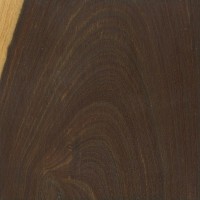 |
Lignum Vitae(Guaiacum officinale) 4,390 lbf (19,510 N)Widely accepted as the hardest wood in the world–this wood has been listed as an endangered species and is listed in CITES. Consider Verawood as a very close substitute. |
|
|
||
 |
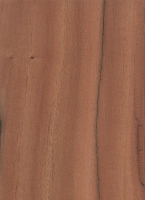 |
Quebracho(Schinopsis spp.) 4,570 lbf (20,340 N)From the Spanish “quebrar hacha,” which literally means “axe breaker.” Aptly named, wood in the Schinopsis genus is among the heaviest and hardest in the world. |
|
|
||
Honorable mentions: Leadwood (3,570 lbf), Brown Ebony (3,590 lbf), Ipe (3,510 lbf), Mopane (3,390 lbf), Burmese Blackwood (3,350 lbf), Kingwood (3,340 lbf).
Other notes:
- Hardness listings are for woods at a dried weight of 12% moisture content.
- There are a handful of obscure shrubs and small trees that yield wood which can be extremely hard. However, these species are typically only available regionally, and are never seen by the vast majority of woodworkers, nor are they reliably documented in woodworking publications.
See also:
Are you an aspiring wood nerd?
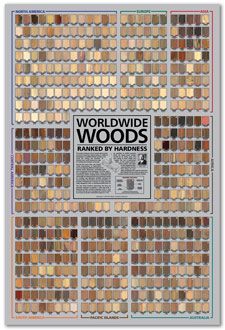

Will this list get updated with species like Waddywood or Australian Buloke? also curious to see if you guys have received any samples of them?
Sounds like the Vera could make a interesting set of 1911 grips.
This is a Brazilian Pau tree, a tree that grows in the American Atlantic forests in the South. The characteristic reddish color of the Pau of Brazil comes from the iron oxide particles that it extracts and that turns it into an incorruptible wood, therefore it was the objective of all the navies and sailors in those lands for their ships damaged by the joke ( Teredinidae, a marine worm). Thus they have practically driven it to extinction. It is one of the hardest and densest woods in the world (there are two that surpass it) and it has a… Read more »
The name “pau” literally just means “wood” so not exactly very descriptive. If I had to guess, I’d say they were probably talking about brazilwood: https://www.wood-database.com/brazilwood/
I want to make a wood splitting base for camping. I need something that will be extremely hard and ideally thin/light so it is portable and not take up too much space. Maybe 2-3″ in thickness? Do you have a recommendation? I found one on Amazon made from Apiton plywood. but it is $85.00. Do you have any suggestions that might be readily available?
I don’t want to take up more of your time, and maybe you’ve addressed this in the comments. Just if you have the inclination. I remember a youtube video were you cite Waddywood as the hardest wood. Its listed in your database as harder than Quebracho and I believe its number one on your poster. Is the ranking in this article geared more towards the hardest readily available woods?
Yes, commercially available and also, kind of outdated. Just didn’t want to take the time to continually update the list. Someday it will be revised.
Haha, I definitely understand. Between all the wood samples you have in your collection that still need to be added to the website, the new articles AND not to mention the speed and consistency of your reply’s to everyones comments its already commendable. I think I speak for everyone when I say you have one of the only accurate and reliable sources of scientific data on wood available. Hopefully this website will set a precedent.
Hi Eric,
Are the sections in you chart analogous to the chemistry periodic table of elements?
No, I tried to think of a way to meaningfully arrange them, and geographic regions was what I came up with, but they do not correspond to the chemistry elements.
Hey all, any info on Bahi would be great.
As far as I can tell, bahi = black palm. https://www.wood-database.com/black-palm/
I have an all wooden & upholstery Hard wood chair, I bought it from the arch diocese of Philadelphia, I was told it was previously back in the 1940s a present from a Cardinal in the Vatican to Arch Bishop Kroll. This chair is magnificently made, no nails all dwells of the same woos. My brother was 6 foot 250lbs and in good shape. I said pick up that chair. He said for what, I said just pick it up. We’ll he laughed and grabbed as if it would be a cinch. All of a sudden he grunted and said… Read more »
Hello , I’m looking for a 100×100 Post for my carport. It’s taking a lot of weight. I want to know what types of hardwoods that are reasonably priced won’t rot easily and freely available . Thank you
Jarrah or blackbutt mate.. Itll outlast anything.
A photo of a turning, finish oil on it. Pear tree wood on left, Saskatoon on the right.
Any data for Amelanchier alnifolia? Known locally in N. America as Saskatoon, a large shrubby species, but remarkably stiff, dense and hard…. lovely to work, and smells just like the berry! Who would have thought?
Nothing on this species, but the closely related species Amelanchier canadensis was measured at 1800 lbf.
Hi Eric, In terms of above or more than ‘normal hardness’ ex. American Oak, I wish to have a very, very extreme hard floor wood in my house/entrance hall. I should appreciate a hardwood that can cope with not only shoes but also boots, stiletto heels etc, I think you get the gist of what I want; namely, a wood that will still hardly show marks even after 20 years of use. Can you please guide me on what you think would be the best wood for my requirements and, oh yes, the wood must also cope with underfloor heating.… Read more »
Ipe, Brazilian Teak, Acacia
Hi, I´d like to know where to find hardness data for Aspidosperma quebracho-blanco https://es.wikipedia.org/wiki/Aspidosperma_quebracho-blanco
It´s a native species of south america.
thank you
I couldn’t find any data for that species, but I did find some density values for it. Taking the average of four sources, it came out to a basic SG of .753, which would work out to an estimated Janka hardness of about 2,250 lbf.
Thanks for your time!
After searching I finally found the datum in a university report. It turns out that:
Janka hardness for this specie is 963 kg/cm2
see page 29.
https://sedici.unlp.edu.ar/bitstream/handle/10915/70851/Documento_completo.pdf?sequence=1
Regards
Ben
Thanks, that was a good find. After converting to lbf units, that comes out to 2167 lbf, which is pretty close to the estimated value of 2250lbf too!
I noticed on your 500 worldwide woods you put nz woods in the Australian section, if you do an update maybe change it to Australasia, which is more technically correct. Anyway, my main point it that Black Maire and Puriri are considered two of the hardest woods in New Zealand. I noticed someone below asked about Puriri already but have you tested Black Maire?
Cheers!
Love the information above. How can I find more information about shrubs and small trees? I’m looking for wood for small tool handles (drawknife, socket chisel, etc.) so a small diameter would be fine. I have several unidentified shrubs I could harvest from or grow if I knew what to chose/look for.
thanks
The real problem that you’re facing is that the shrubs are unidentified. If you can get an ID of what you’ve got, you’d be much more likely to at least get a ballpark estimate of the wood’s hardness based on its density. https://datadryad.org/stash/dataset/doi:10.5061/dryad.234 This resource has specific gravity numbers of a vast number of species, almost too many to wade through, but it’s more likely you’d find at least a little info on an obscure shrub or tree.
Thank you for the response and the link(s). The database was pretty much exactly what I was looking for. I sorted for North America and descending Janka hardness and I waded through it. I was able to confirm a few I suspected, oak, hickory, maple (less so) and hornbeam, and I learned a few others, Black Locust, preferred Hickory (Pignut) and another I wanted to buy anyway, Serviceberry. I also learned that I would have several better options if I lived in Florida instead of Ohio. There was at least a dozen options that interested me. A few of the… Read more »
Here in El Salvador, We have Cedro or Cedar , Mahomony , Cortez Blanco .
You, your book, and your charts, continue to be my “go-t0” wood reference. Thank you for all your hard work.
Why is the best saw or manner to cut camel thorn logs which is very hard?
What is the functional difference between Janka hardness and crushing strength? I ask this relative to selecting woods for wear parts in furniture such as drawer guides.
Thanks, Jere
Despite the name, crushing strength is a lot different than hardness. Take a quick look here: https://www.wood-database.com/wood-articles/crushing-strength/
Quite informative. I wasn’t aware that crushing strength was measured parallel to the grain. It seems hardness is the property most appropriate to my concerns. I’ve been using poplar as a secondary wood in case goods for drawer sides, runners and guides. Seems I should consider a harder species, at least for large/heavily loaded drawers.
Thanks, Jere
Any guess on what this wood is?!
If you are using a common US hardwood, it looks closest to black cherry.
Try this local wood from Kalimantan Province of Indonesia (Borneo).
Kingdom :
Plantae
(Wothout takson):
Angiospermae
(Without takson):
Magnoliids
Ordo:
Laurales
Famili:
Lauraceae
Genus:
Eusideroxylon
Spesies:
E. zwageri
We usually call it as Kayu Ulin (Ulin Wood).
This wood is water resistant, even from sea water. Some people said that this wood will be stronger if it soaked in water.
Yes, this wood is actually inlcuded on my hardness poster https://www.wood-database.com/worldwide-woods/
It’s listed on there as “Borneo Ironwood.”
Why is Eusideroxylon Zwageri aka Ulin not included in the online Wood-Database.com at all?
Also, considering that other species such as Xanthostemon Verdugonianus aka Mangkono have higher hardness levels than some of the nominants of this hardness list, the list should certainly be updated
I have a back log of about 800 wood samples right now. It’s all in a matter of time.
This page should reflect a more up to date accounting of what I’ve actually processed through: https://www.wood-database.com/wood-finder/?fwp_sort=hardness
There are four types of ipe lapacho in Brazil
Yellow ipe, pink ipe. purple IPE . dwarf ipe . the colors of the flowers and the trees are totally different
see the picture of the dwarf ipe
this quality ipê titanium drills to drill
it burns the titanium and carbide drills
I work with the four species of ipe
the dwarf ipe is much harder than Lignum Vitae
my chainsaw 120 hp does not like to cut this ipê
Do you happen to have a botanical name for this “dwarf ipe” species? I have several samples of Handroanthus (formerly classified as Tabebuia), and I believe some of them correspond to pink trumpet tree and yellow trumpet tree, but couldn’t find a reference to dwarf ipe.
In Brazil there are actually 5 species of ipe more and a name change fight and put scientific name Nome Popular: Ipê Branco White Ipe Tabebuia roseo-alba dry wood floats on water Pink ipe Tabebuia avellanedae Tabebuia impetiginosa this wood sinks into the water wood looks : Dipteryx odorata Purple IPE ipê from the amazon dry wood floats on water Handroanthus avellanedae Yellow ipe Handroanthus serratifolius popular name ipe dwarf ipe steel ipe black this wood sinks into the water already cut several ipe with chainsaw is there anything in the wood looks like mineral particles looks like micro… Read more »
Can you supply me with a resource of seeds from those ipe species?
what about locust trees
They’re some of the hardest woods that are commercially available in temperate regions of North America, but not anywhere near as hard as other species worldwide.
Hello my good Sir.
Am from Brazil and I feel obligation to let you know that the Cebil (Anadenanthera Colubrina) is the softest of all the Anadenanthera genre, being the hardest I know and have withnessed, what we call “Angico-Preto” (Anadenanthera Macrocarpa) which is a different species and is far harder than the Cebil (Anadenanthera Colubrina).
The reason am saying this is because I can’t find anything related to the Macrocarp species, seems like everyone in the world sees it as being the same as the Colubrina species which is not true.
kamagong is the hardest
Hi guys.. what about Mulga , Acacia aneura. Australian desert timber. Whats the janka hardness of this?
hey M8 mulga is very hard but gidgee is the King in this country .!
Do you have any information on the hardness of the New Zealand native Black Puriri tree, Vitex lucens, rated harder than any of the Australian hardwood species I understand?
https://www.nzgeo.com/stories/princely-puriri/
I don’t know about it being harder than any Australia species, but maybe there is some variation within the species. I have a sample of the wood but I’ve not yet gotten around to investigating it more closely. I’ll keep it on my radar.
HI Eric,
Could you please help me identify this hardwood?
I bought this table in Australia in the office closing sale
Australian woods are in a whole different world in a lot of ways. Looks like a nice piece, but I’m afraid I can’t be of much help here. Maybe someone else from Australia can chime in?
How about Mankono (Xanthostemon verdugonianus)? what rank it is?
Mangkono is very hard, I have it at 4450 lbf. It’s on my “Worldwide Woods” poster (see above), ranked worldwide at #6.
Yes Sir..Mangkono wood is one? But there some different hardest woods may not metioned were found in the regions where the most visited by thypoons. Trees or woods becomes toughed enough overthere and can stand for centuries. Mostly in asia facific regions. Those woods locally names.: Bahi, sudiang, tingsian, yakal, acasia, tugas, pili, ipil, dao, including mangkono…
If you could get some scientific / botanical names for those woods, I think that would be very interesting and I’d be willing to investigate.
Based on what I know:
Ipil=merbau
Acasia=monkeypod
Tugas=molave
Yakal=shorea astylosa
Dao=pacific wallnut
Tingsian=probably taguile or dark red meranti
Sudiang=Ctenolophonphilippinense
But Kamagong or Philippine Ebony is also worth mentioning since all those in the list are found in the Philippines anyway
These aren’t really that hard but we can say durable at the most. Molave, though, is exceptionally durable. It was used as railroad supports. After railroads ceased operations in provinces in the Philippines, many nearby railroad dwellers dig these woods and turned them into fences. I mean, you can only imagine the abuse molave woods had through the years of railroad operations and I can say that they were still intact when people dug them out.
Mangkono is indeed very hard and there are 5 types of native Mangkono in the Philippines & a lot more in Australia & Melanesia. The 5 native Mangkono’s in the Philippines. are as follows: 1. Xanthostemon verdugonianus – the most famous of the 5 mangkono (the one Noelle is referring to) – it has red flower 2. Xanthostemon speciosus – also known as Palawan Mangkono or ironwood – extremely hard and heavy also – it also has red flowers 3. Xanthostemon fruticosus – extremely hard and heavy – has red flowers also. Some folks in N. Luzon used this wood… Read more »
Have you heard of the tree called bono in the Philippines? We believe in this one as Philippines hardest comparable to the magkono.
any rating on Cuchi? used to make pig pens in Bolivian lowlands. ivory and red mahogany stripes. carving hardness about like ivory.
I don’t yet have a sample of Cuchi (Astronium urundeuva), but the hardness is about 3,150 lbf. Basically a harder and heavier version of Goncalo Alves.
What’s the rating for mesquite? In the southwest hat stuff is infamous for killing saw blades.
mesquite is 2,340 lbs or 10KN
I believe one of the reasons mesquite is so tough on saws is due to the knots in it, just like Osage Orange (aka Boks D’arc or Horse Apple).
This is interesting, but it would be really nice if the measurements for some common woods were also included on the list. Not necessarily as a comprehensive ranking from balsa to lignum vitae, but maybe oak, beech, birch, pine would really help mere mortals to get a sense of the scale.
I saw a ree, name started with a “P” it has large leaves and some kind of nuts in a cluster, they are green then turn brown. Never saw the inside of the nut. I WAS TOLD THAT THE WOOD WAS HARD AND GREW VERY FAST. This was in Swannoana,NC CAN YOU TELL ME ABOUT THIS TREE.
Probably a Paulownia tree. Orig from Japan but grows wild in WNC. I live in Sylva NC and see a lot of them.
I think you’ve probably hit it on the head, but this wood doesn’t appear to actually be very hard in the sense of on the scale. It only clocks in at 300 lbf.
I just had rough sown live edge Ambrosia Maple slabs cut. Dimensions are 2″ thick and anywhere from 11′-14′ long, various widths of course. Many of these pieces have very soft spots in a few areas of the board. So soft that I can press my thumb into it and it feels about the same consistency as a very stiff sponge. Air drying at the moment, stickered and stacked properly.
Will these soft areas dry, rot, continue to rot? Should I cut away these areas? I would look alot of BFt if so. Please help! Thanks everyone!!
I wonder what number would Xanthostemon verdugonianus naves would be?
To be honest, this article is quite outdated, and needs to be updated. I did a poster on Janka hardness which was much more comprehensive, and the wood you mention (Mangkono) ranked #1 for the Pacific Islands region, and #6 overall. https://www.wood-database.com/worldwide-woods/
When are you going to update this article
More than likely it won’t be until I update the site with all the yet-unlisted new species that I’ve acquired in the last few years. But in the meantime, you can view a page that shows the woods currently listed on the site sorted by hardness: https://www.wood-database.com/wood-finder/?fwp_sort=hardness
The Janka hardness test measures the compression of the wood, just because the wood has a high Janka rating does not necessarily mean it’s the strogest, lignum vitae for example is very dense and has a low compression rate when compared to hickory, however; hickory will do a better job as an axe handle than lignum vitae because of it’s flexibility, vice-versa lignum vitae is used for marine ball bearings in submarines, icebreakers, etc.
It will all depend on what you want to use the wood for.
What about the “bois d’arc” …..commonly called the bodark tree? The Indians in Oklahoma used it to make their arrows because they did not shatter. These trees are very hard to cut down with a regular axe…and some say impossible. Anyone know about this tree?
Yes, it is also called Osage Orange, scientific name is Maclura pomifera. It’s certainly among the hardest woods in the United States, but not even close to topping the list of worldwide woods.
I see Ipe is in the honorable mention but how many of these other woods are inexpensive enough to use as decking? I see here https://ipewoods.com/ipe-vs-other-hardwoods/ the hardest decking wood. Just wondering.
It’s also known as a Horse Apple tree. I’ve never seen arrows made out of it but I’ve used it to make a bow and have shot several made out of it and it is as hard as the hickory we have around here (TX, LA) but hard to work with because of all the knots.
So Australian Buloke is not the hardest wood? I’ve been working with quebracho, after planing 10 minutes the sole of my plane is destroyed as well as the blade haha
There is an archived listing of the top 125 hardest and softest woods, along with a good description of hardness testing by Brinell {steel ball}, Chalais-Meudon {Monnin} {steel cylinder}, Janka {steel ball}.
https://archive.is/20120904022306/www.morlanwoodgifts.com/MM011.ASP?pageno=207
Have you ever seen anything for Keawe — Prosopis pallida ?
or
Mountain mahogany — Cercocarpus montanus ?
Both are very hard and won’t float in water. Neither is a commercial wood.
Does anyone know a company which sells beand new frame which cut trees with 1 m or 1.2 meter diameter. And does anyone know a company with the best bandsaws sawmill.
Still an amateur woodworker, so excuse what my be a silly question, which of these top 10 woods would withstand the use of being a riser for a take down bow? The limbs are made of ash, have tried oak and other common hardwoods to the UK but none can stand the strain. Many thanks Jon
Yes, but none of those grow around here. Osage orange does, and I use it for show or for durability when weight is of no concern.
Not sure how hard it is but nightcap wattle which is really quite rare and only found in one national park. I was lucky enough to have some from a property that bordered the park and I couldn’t route more than a few inches before the bit was buggered. I used about 20 bits on a round table no more than a metre across.
I fully support Eric Meier’s
position. If one does not perpetuate the criteria applicable to list the hardest woods,
anyone can present a Janka test and demand it to be
included on a list. Controlled
and multiple test must be done.
does anyone know where i can buy black ironwood?
Carlton McLendons rare woods and veneers in Atlanta Georgia has Black Ironwood harvested in southern Florida. I purchased a half log May 2018 very heavy very hard with a distinctive odor similar to Bakelite or urine but he does have more
I agree Marcus
Can’t believe this! I shamefully cut some quebra hacha at home in Puerto Rico when I was in my teens. We used the wood for burning and fencing . I still remember the axe hitting the tree and rebounding like nothing I ever experienced before. I long forgot this until now when I read this list of top ten hardest woods. I thought that our name for the wood was merely a colloquial, common name. I knew that the wood was very dense and hard but never thought it made the list. Can I use it to make an electric… Read more »
I’m sure it’d be fine to use for a guitar, but it’d be quite heavy if it were solid. Best to use it as a top lamination.
Thanks this is fascinating. Can you insert where they are from?
This wood is giving me wood. Makes me wish I had a cabin made of ebony.
What wood is suitable high temp (car exhaust) heat insulation?
Bubinga and Purple Heart are up there as well
Allocasuarina Leuhmannii (Buloke)
When someone shows me a credible and verifiable source for this wood’s Janka hardness, I’ll consider adding it.
I found a site that lists the Janka hardness ;)
https://www.wood-database.com/australian-buloke/
I have a piece of the second hardest wood in the World.It belonged to my late Husband.It is called Lignum Vitae
Here it is …..”Wood in Australia”
Types, Properties and Uses
by Keith R Bootle (Australian Publication)
Second Edition
An excellent technical publication on the more popular Aust. species
Mark is correct. Buloke is among the hardest in Aust by the Janka hardness penetration test,
I do have that book, and I admit that this list needs updating. But I still have my doubts about Buloke’s hardness. I’d be interested to know the source where Bootle got his information. I suspect that the Janka number was either for end hardness (rather than side hardness), or it was for a sample that was drier than 12% MC.
I have no reason to doubt the technical information in Bootle.
From my experience, data in it has been accurate. Dry Buloke (moisture content not sepcified) is given as > 22 KN, Belah (another dryland casuarina) is given as 20 KN (same as Lignum vitae). Gidgee as 19 KN.
The say that harness data is an average of radial and tangential sections. Like density and colur, Janka hardness is likely to show some variation as in all species, according to growing conditions.
I don’t dispute that Bootle’s information is credible, but I’ve found that even the most credible of sources can still give a false impression, or pass on typos. For instance, beside the moisture content of the tested wood, and side/end hardness, there’s also the matter of number of samples tested. If an exceptionally hard and heavy specimen was the only piece tested, this would not give an accurate picture of the wood’s AVERAGE hardness. The reason I bring this up is because Buloke’s average weight (which I’ve also confirmed myself) is around 1100 kg/m3, which is rather light in comparison… Read more »
Here is a link to a document that Eugene described in your correspondence on the Top 10 Heaviest Woods page. Whilst it does not cover Buloke (Allocasuarina leuhmannii), it may still be of interest because it covers several hardwoods found in western Queensland, uses sound scientific method, and testing was performed in a nationally accredited laboratory: https://rirdc.infoservices.com.au/downloads/04-132.pdf Section 3 covers the mechanical properties, and describes the methodology of the sampling and testing. Table 3.1 on Page 23 (Page 43/242 in the pdf) shows the average air dry (which it defines as 12% moisture content, tested in accordance with AS/NZS 1080.1… Read more »
I tried to get this wood to make marital arts weapons years ago; that dog don’t hunt. I had a connection in Australia. Seems decades ago they made fence posts out of it but know it is protected. At the time there were a few pieces to be found but not what I needed. I usually use Lignum Vitae but it is very hard to get.
“…marital arts weapons…”?!?
I realize that it’s a typo. Or is it??